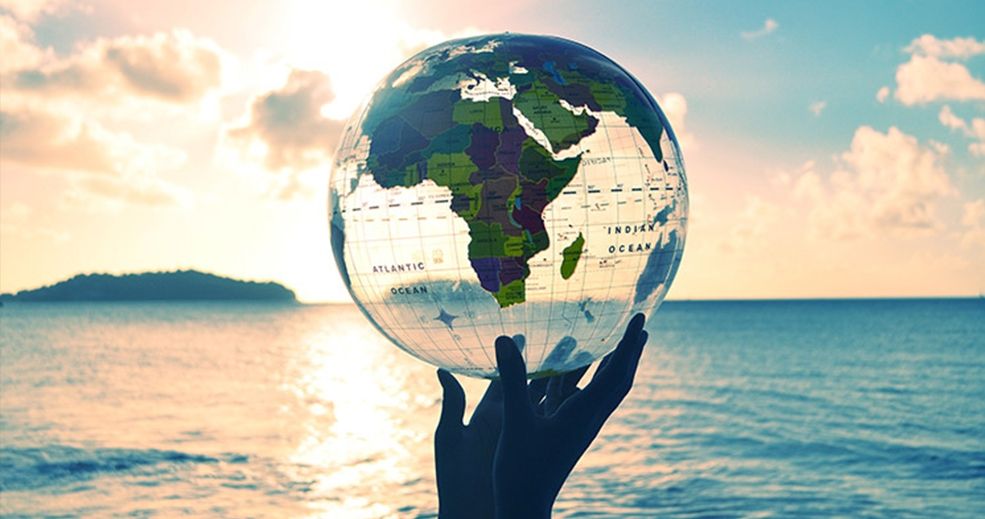
Sub-Saharan Africa: how is climate change affecting the region’s economies?
Central to the agenda of COP28, which is taking place in Dubai from 30 November to 12 December, the issue of climate change has captured the world’s attention. This international summit offers, in particular, an opportunity to discuss unprecedented climate and environmental challenges facing sub-Saharan Africa.
Extreme weather events like floods, heat waves and droughts are occurring more and more frequently and with ever greater intensity across the region. These meteorological phenomena trigger water shortages, contribute to desertification, speed up coastal erosion, damage infrastructure and reduce harvests, leading to lost revenue for governments along the way.
Furthermore, these effects of climate change also increase the burden of disease and the intensity of poverty and fuel migration, crystallising various social and economic tensions within the region.
Although sub-Saharan Africa is responsible for less than 10% of global greenhouse gas emissions, it turns out that it is the region most vulnerable to the effects of climate change.
According to UN figures, recent floods in the Horn of Africa resulted in nearly 300 deaths and displaced more than 2 million people. Having recently suffered its worst drought for 40 years, over the past few weeks the region has fallen prey to torrential rain caused by the El Niño weather phenomenon.
One of the countries affected by this weather phenomenon, along with Ethiopia and Somalia, is Kenya. Agriculture – the main contributor to Kenya’s economy – is highly vulnerable to ever more frequent droughts and torrential downpours.
According to the World Bank, “Without adaptation measures, the impact from climate change could not only result in real GDP losses of up to 7% but also increase push over a million more people into poverty by 2050”.
That worrying observation applies to each and every country in the region. Cyclones in Mozambique, rising water levels in Senegal and droughts in Sudan all highlight the importance of implementing new strategies to adapt to climate change and build resilience.
A crucial issue in the upcoming talks at COP28 will be the question of how these strategies are to be funded. In the name of climate justice, the countries of sub-Saharan Africa expect developed countries, responsible for the bulk of greenhouse gas emissions, to help them reduce their carbon emissions and adapt to global warming. According to sub-Saharan governments, this request is all the more justified when you consider that, according to UN estimates, the region is going to have to devote between 2% and 3% of its GDP every year to climate change adaptation efforts at a time when many of the region’s countries are already struggling with very high levels of public debt.
In light of this, a big step forward was made on the first day of COP28 when negotiators agreed to establish a “loss and damage” fund to help compensate for irreversible damage suffered by “particularly vulnerable” countries. The fund, to be hosted by the World Bank for the next four years, will be launched in 2024.
However, “the compromise that has been reached is still fragile: there is as yet no consensus on either the donor countries or the beneficiaries”, said Lola Vallejo, Climate Programme Director at IDDRI (Institut du développement durable et des relations internationales – Institute for Sustainable Development and International Relations).
Anticipating these challenges at the Africa Climate Summit in Nairobi this last September, a number of African heads of state called for global financial reform and a “comprehensive and systemic response to the incipient debt crisis”, suggesting a ten-year moratorium on interest payments to allow for spending on adaptation as well as breaks in debt servicing when natural disasters strike.
Other innovative proposals also emerged, such as “debt-for-nature” deals. Such deals – which have, for example, been struck between Germany and Kenya and between Portugal and Gabon – offer developing countries the option of reducing their foreign debt in exchange for green investment. However, according to the African Development Bank, such bilateral swaps tend to be “too modest” to address either the scale of the debt crisis or the challenges posed by the climate crisis.
Lastly, other countries are advocating for the adoption of an international tax or the development of carbon credits, a system of offsets whereby the most polluting industries are allocated greenhouse gas emissions quotas which they can potentially exceed by buying credits generated by projects that reduce carbon emissions.
All in all, according to the African Development Bank, “Africa will need $1.6 trillion between 2020 and 2030 to achieve the targets set out in the Paris Agreement” – equivalent to nearly 80% of the region’s GDP. Climate change is thus both an immediate issue and a long-term constraint for the countries of sub-Saharan Africa, particularly for those in the Sahel and island nations.
Sub-Saharan Africa’s reliance on farming, demographic pressure and low level of development all contribute to its lack of resilience. Consequently, the COP28 summit is an opportunity for the region’s countries to make the case for measures to restructure debt and grant concessional loans to facilitate energy transition and climate adaptation efforts.







